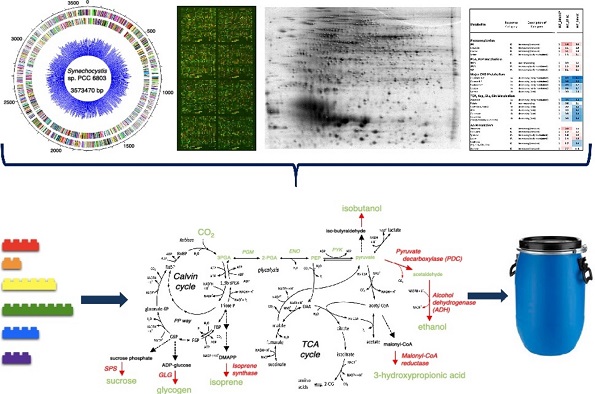
Cyanobacterial Acclimation to Limiting CO2 Amounts: Photorespiration, Inorganic Carbon Sensing and Synthetic Biology Approaches
- Luning Liu
- Suitable for: Staff and students with an interest in Genomes, Systems and Therapeutic Targeting
- Admission: Free
Add this event to my calendar
Click on "Create a calendar file" and your browser will download a .ics file for this event.
Microsoft Outlook: Download the file, double-click it to open it in Outlook, then click on "Save & Close" to save it to your calendar. If that doesn't work go into Outlook, click on the File tab, then on Open & Export, then Open Calendar. Select your .ics file then click on "Save & Close".
Google Calendar: download the file, then go into your calendar. On the left where it says "Other calendars" click on the arrow icon and then click on Import calendar. Click on Browse and select the .ics file, then click on Import.
Apple Calendar: The file may open automatically with an option to save it to your calendar. If not, download the file, then you can either drag it to Calendar or import the file by going to File >Import > Import and choosing the .ics file.
Cyanobacteria evolved an efficient inorganic carbon metabolism (CCM) that allows Rubisco to work under saturating CO2-conditions. Nevertheless, the photorespiratory metabolism remains essential for cyanobacteria under ambient air conditions to remove toxic byproducts of the Rubisco oxygenase reaction. Our transcriptomic and metabolomic results have revealed that the acclimation to low CO2 (LC) conditions involves the coordinated up-regulation of many genes mostly encoding for components of the CCM and many other proteins. These expression changes are accompanied by characteristic shifts in metabolite pools; among them many photorespiratory intermediates were transiently accumulated. The transcript and metabolic patterns of wild-type cells were compared to mutants defective in the CCM to support the role of metabolic signals such as phosphoglycolate as potential signal molecules. In addition, I will discuss other signals that might be involved in the sensing of LC conditions, such as the newly discovered PII-like protein SbtB. Our studies will inform the generation of artificial photorespiratory pathways, which are supposed to work without CO2 loss or can even fix additional CO2.
